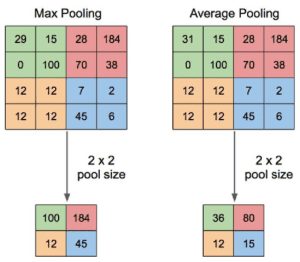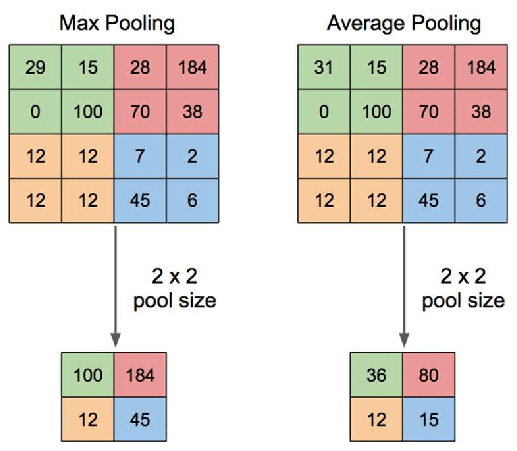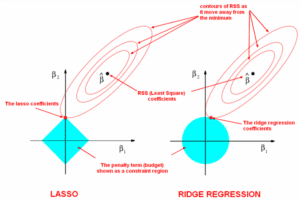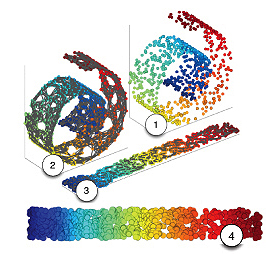A Brief History of Pooling Layers
Pooling layers became an essential component of convolutional neural networks (CNNs) during the 1980s and 1990s. Researchers like Yann LeCun adopted them for tasks such as handwritten digit recognition. By enabling dimensional reduction and computational efficiency, pooling layers helped CNNs scale to handle complex image recognition tasks.
What Are Pooling Layers?
Pooling layers in CNNs act like sieves, straining out unnecessary details while retaining critical information. By summarising regions of input data, pooling reduces the dimensions of feature maps, simplifying calculations and preserving important patterns.

Why Are Pooling Layers Used?
Pooling layers solve several challenges in machine learning:
Advantages
- Dimensional Reduction: Reduces feature map sizes, speeding up calculations.
- Noise Reduction: Filters out irrelevant details, improving pattern recognition.
- Translation Invariance: Ensures robust feature recognition regardless of position.
Challenges Addressed
- Overfitting: Generalises features, reducing reliance on specific details.
- Computational Load: Simplifies input sizes for downstream layers, enhancing efficiency.
- Positional Sensitivity: Helps networks learn invariant features, improving robustness.

How Are Pooling Layers Used?
Pooling layers slide a filter over input feature maps to aggregate information. Common pooling operations include:
- Max Pooling: Retains the maximum value from each region, capturing prominent features.
- Average Pooling: Computes the average value within a region, smoothing the output.
- Global Pooling: Reduces the entire feature map to a single value per channel, commonly used in classification tasks.
Applications range from object detection and feature extraction to noise reduction.
Different Types of Pooling
- Max Pooling:
- Focuses on the most prominent features by selecting the maximum value from each region.
- Average Pooling:
- Smoothens outputs by averaging values within regions, reducing noise.
- Global Pooling:
- Compresses feature maps into single representations for tasks like classification.
- L2 Pooling:
- Computes the root mean square of values in a region, balancing prominence and smoothness.
Key Features of Pooling Layers
Pooling layers are integral to CNNs due to their features:
- Dimensionality Reduction: Simplifies data while retaining key patterns.
- Noise Tolerance: Filters out minor variations to enhance model robustness.
- Flexibility: Adapts seamlessly to feature maps of varying sizes and architectures.
Popular Tools for Pooling Layers
Modern frameworks support pooling layers with built-in operations:
- TensorFlow: Provides optimised layers for max, average, and global pooling.
- PyTorch: Offers extensive pooling operations, including adaptive pooling layers.
- Keras: Simplifies the implementation of pooling layers for beginners.
- OpenCV: Enables custom pooling operations for image processing.
- MATLAB: Supports pooling functionalities for CNN prototyping and experimentation.
Applications in Australian Governmental Agencies
Pooling layers are revolutionising various applications in Australia:
- Healthcare:
- Application: Simplifies feature extraction from high-resolution medical images, aiding disease diagnosis.
- Transport and Infrastructure:
- Application: Detects and categorises vehicles for efficient traffic analysis systems.
- Environmental Monitoring:
- Application: Analyses satellite imagery to monitor environmental changes, such as deforestation or urban expansion.
Official Statistics and Industry Impact
- Global Impact:
According to Statista, 80% of convolutional neural networks utilised pooling layers in 2023, reducing computational costs by 30%. - Australian Use Cases:
A report by the Australian Department of Industry revealed that 60% of AI-driven projects in healthcare and environmental monitoring relied on pooling layers, increasing model efficiency by 25%.
References
- LeCun, Y., et al. (1998). Gradient-Based Learning Applied to Document Recognition.
- TensorFlow Documentation.
- Australian Government: AI Applications in Transport and Environmental Monitoring (2023).
Conclusion
Pooling layers are a cornerstone of convolutional neural networks, enabling dimensional reduction, robust feature extraction, and computational efficiency. Their applications in fields like healthcare, transport, and environmental monitoring highlight their significance in modern AI. With accessible tools like TensorFlow, PyTorch, and Keras, implementing pooling layers is easier than ever.
How interested are you in uncovering even more about this topic? Our next article dives deeper into [insert next topic], unravelling insights you won’t want to miss. Stay curious and take the next step with us!








